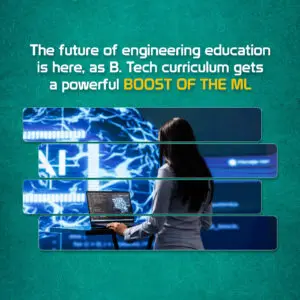
Generative AI is no longer just a buzzword; it is a powerful force driving innovation across tech, design, and communication.
Whether it’s creating human-like conversations, designing visuals from text prompts, or composing original music, generative models are pushing the boundaries of what machines can do. These advancements are not only impressive but also practical, with real-world applications unfolding at a faster pace than ever.
Powered by deep learning techniques and massive datasets, generative AI tools such as ChatGPT, DALL·E, and Stable Diffusion are now at the forefront of innovation across various industries.
For students stepping into the world of Computer Science with a focus on AI and Machine Learning, understanding the workings and potential of generative models isn’t just exciting — it’s essential for building the future.
Models that Learn and Create like Humans
Generative AI models are built on the idea of teaching machines not just to analyse data but to generate new and meaningful content, much like how humans learn and create.
At the core of technology are models such as the Generative Adversarial Networks (GANs), which utilise neural networks comprising a generator and a discriminator. These two neural portals compete with each other to produce increasingly realistic outputs.
Variational Auto-Encoders (VAEs) take a more structured approach, learning to encode data into a compressed form and then decode it to create variations that retain core features. Meanwhile, transformer-based architectures, such as those behind GPT and other large language models, rely on attention mechanisms to comprehend context, sequence, and relationships within data — enabling them to generate coherent text, images, or even code.
Art to Algorithms: Real-World Applications of Generative AI
From text generation and image creation to music composition and drug discovery, generative AI is rapidly transforming the way industries operate and innovate.
In the creative world, tools like DALL·E and Midjourney are empowering designers to generate visuals from simple text prompts, while musicians are utilising AI to compose melodies or enhance their production. In content and communication, language models like ChatGPT are being used for writing, customer service, translation, and tutoring.
The gaming industry is leveraging AI to auto-generate environments, characters, and storylines, drastically reducing development time. Beyond the arts, generative models are making breakthroughs in healthcare — notably in drug discovery, where they help predict molecular structures and accelerate the creation of new treatments.
Generative AI is Being Poised as the Game-Changer in the Field of Engineering
From designing advanced materials and simulating complex systems to automating software development and optimising manufacturing processes, its applications are vast and growing.
For students pursuing a degree in Computer Science with a specialisation in AI and ML, this opens up a broad spectrum of career opportunities — including roles like AI research engineer, data scientist, prompt engineer, machine learning architect, and more. According to industry reports, demand for AI professionals is projected to grow by over 35% annually in the coming years.
Academic institutions that offer focused programs in AI/ML equip students with the theoretical foundations and practical skills necessary to thrive in this rapidly evolving landscape.
Generative AI is redefining creativity, problem-solving, and innovation across every sector — from design and communication to healthcare and engineering. At OmDayal Group of Institutions, we are equipping our students with the knowledge, tools, and mindset needed to explore and excel in this dynamic field of AI and Machine Learning.
We aim to nurture not just coders but future thinkers who can shape technology with purpose. With hands-on learning and future-focused guidance, we are building a generation ready to lead in the age of intelligent machines.
Sources:




